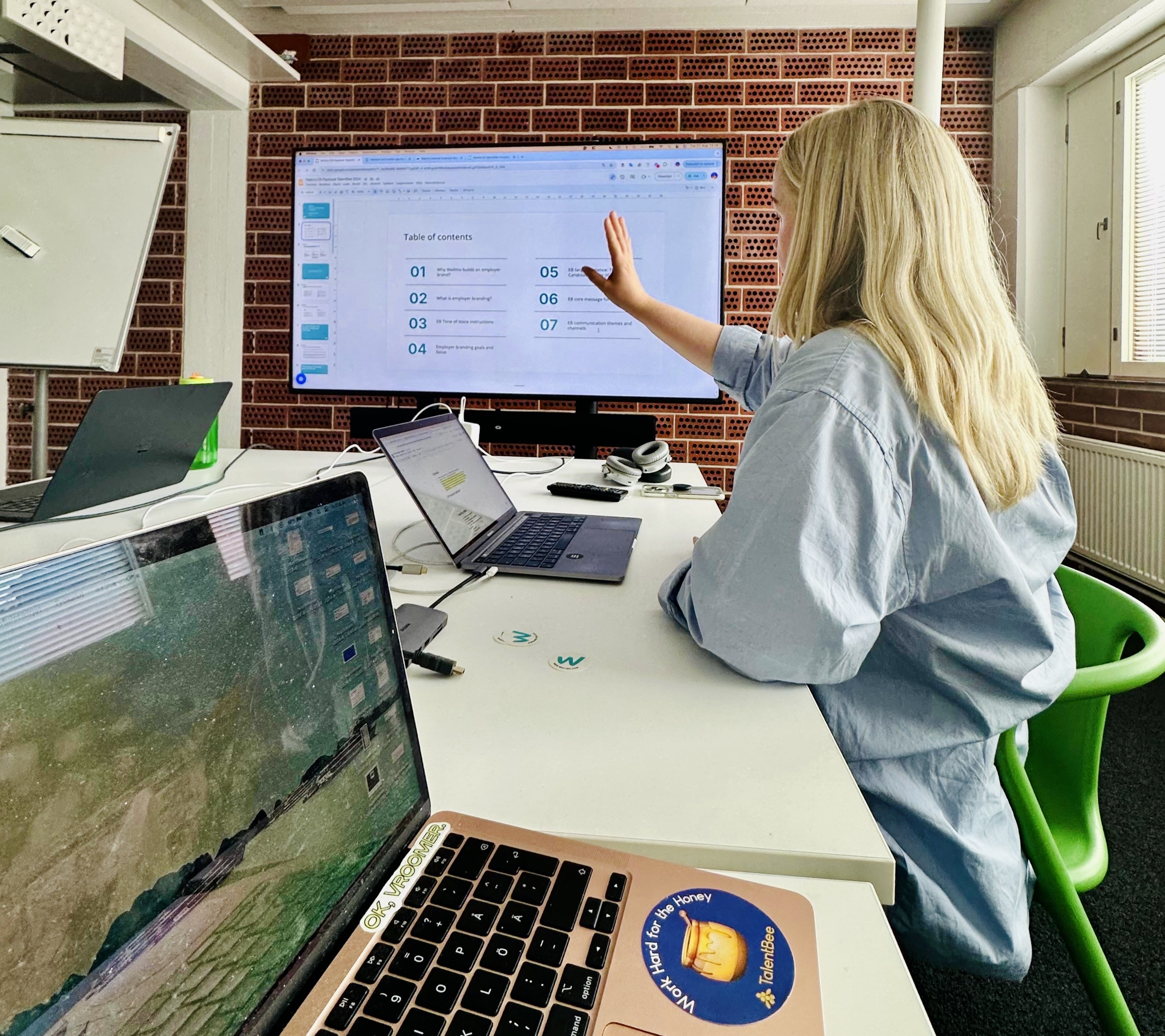I recently joined TalentBee’s team as a Talent Acquisition Strategist. Let me share a few examples of how TalentBee’s long-term strategy for employer branding and building talent pipelines was showcased in my own recruitment process for TalentBee!
1. Strong brand over salary: I chose TalentBee over a higher salary offer from another company
Smaller start-ups can’t often compete with the high salaries in bigger companies. But what people are ready to pay for, is a strong brand.
When TalentBee made me an offer, I had another offer on the table from a bigger company with a higher salary. I chose TalentBee and a lower salary because I specifically wanted to work at TalentBee.
I had been following TalentBee’s journey since the beginning. What drew me to them was the fresh approach to talent acquisition & employer branding (taking inspiration from sales & marketing), and the super transparent communication style (sharing publicly about salaries, sales pipelines, and so on). I actually knew very quickly I wanted to work there someday.
If TalentBee hadn’t started growing their brand from the get-go, chances are I wouldn’t have known enough about them, and a higher salary offer in another company would’ve been my choice in that case. (Psst! TalentBee’s bonuses, 4-day work week, and partnership option are of course part of the overall compensation package, so I wouldn’t recommend just comparing base salaries directly.)
“A well-known, respected brand sets you apart from your competitors and attracts top talent to your organization.”
A well-known, respected brand sets you apart from your competitors and attracts top talent to your organization. By investing in your brand, you’ll establish yourself as a leader in your industry and build a reputation that will attract both customers and employees.
👉 TRY THIS: Building a brand is a long-term strategy, but you can start by finding out your unique selling points and how you position yourself within the competition. Start by talking with your current employees: what do they most appreciate about the company, and what made them choose you?
2. Your total time-to-hire increases – but you’ll be able to close a hire more quickly
Companies often want to reduce their time-to-hire, but I actually think that increasing the time-to-hire is a better strategy.
I first started chatting with Saara & Samuli in September 2022, and I started at TalentBee in April 2023. So, the time-to-hire was for sure longer, but when it was time for TalentBee to hire the next person to the team – I was ready to take the leap immediately! (Luckily, the stars were also aligned because I was currently in between jobs due to layoffs = no notice period! We believe it was meant to bee. 🐝 )
To ensure business growth, it’s crucial to be able to hire the right people at the right time. So how can you start building talent pipelines, and making sure the right people are ready to take the leap when you are ready to hire?
👉 TRY THIS: You can start small: even if you’re not hiring for a particular role just yet, reach out on LinkedIn to interesting talents and suggest having a remote coffee chat to get to know each other better, and to learn more about their current situation. Share openly that you’re not hiring right now, to manage expectations.
3. Building communities & nurturing relationships pay off
Building authentic relationships and having multiple touchpoints with talents is something I recommend doing in recruitment.
During the months me and TalentBee were getting to know each other (dating 🥰), we chatted on LinkedIn, had video and phone calls, and went to an industry event together. I was also a part of the SaaS TA community Hive of Talents, had been listening to #TalentBuzz and Welcome to our Hive podcasts, and Saara suggested some interesting courses for me to take part in.
I felt like the team was actually interested in getting to know me as a person, and wanted to offer something in return, such as the learnings and workshops in Hive of Talents. When I got the job offer, it felt like I already knew the people, how they work, and what my work would look like at TalentBee. In some ways, I felt my onboarding had started even before the actual job offer.
"In some ways, I felt my onboarding had started even before the actual job offer."
Let’s imagine a scenario, where I would’ve gotten to know TalentBee only a few weeks before they made me a job offer. I would know just as much from them, as about the other company – but, they would’ve offered me a higher salary than TalentBee. Again, my choice would’ve most likely been the one with the higher salary.
👉 TRY THIS: So, how can you start nurturing relationships and building communities? I believe it all starts with genuinely wanting to get to know the people you want to recruit and building two-way relationships with them. It’s not just you offering an open role to candidates – it’s about offering value to the talents. The value can be an open knowledge-sharing community, a book recommendation, or something entirely new!
Want to have a chat about Talent Acquisition? Connect with me on LinkedIn!








